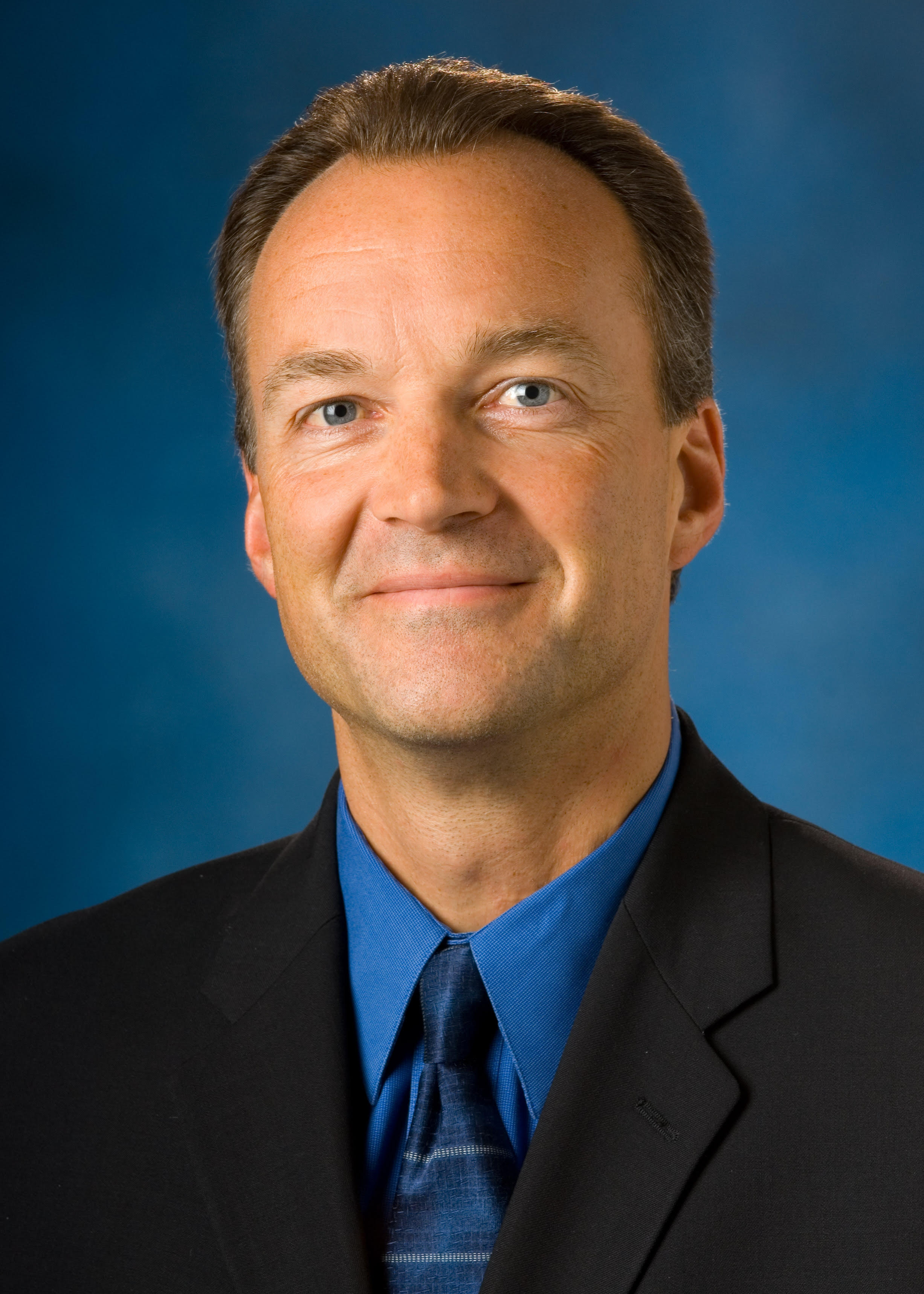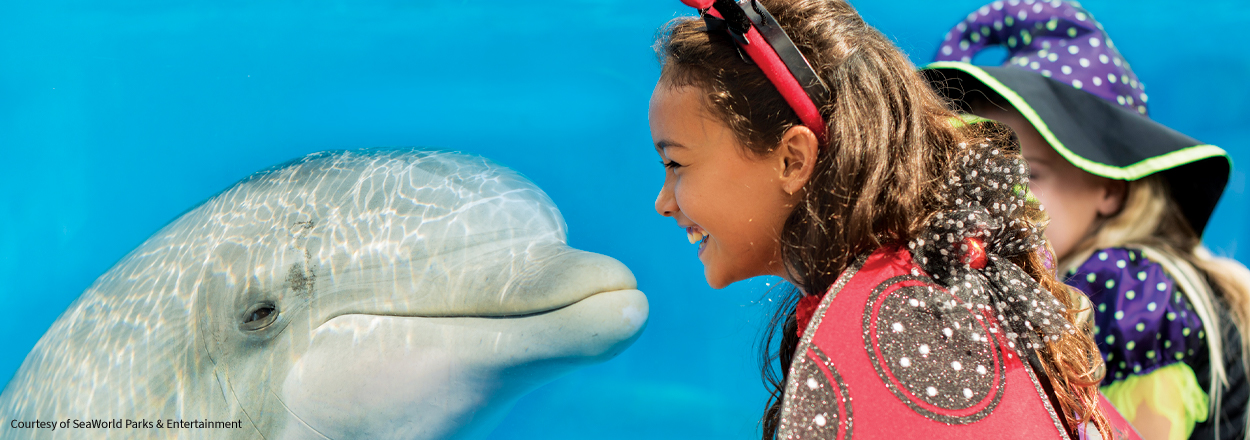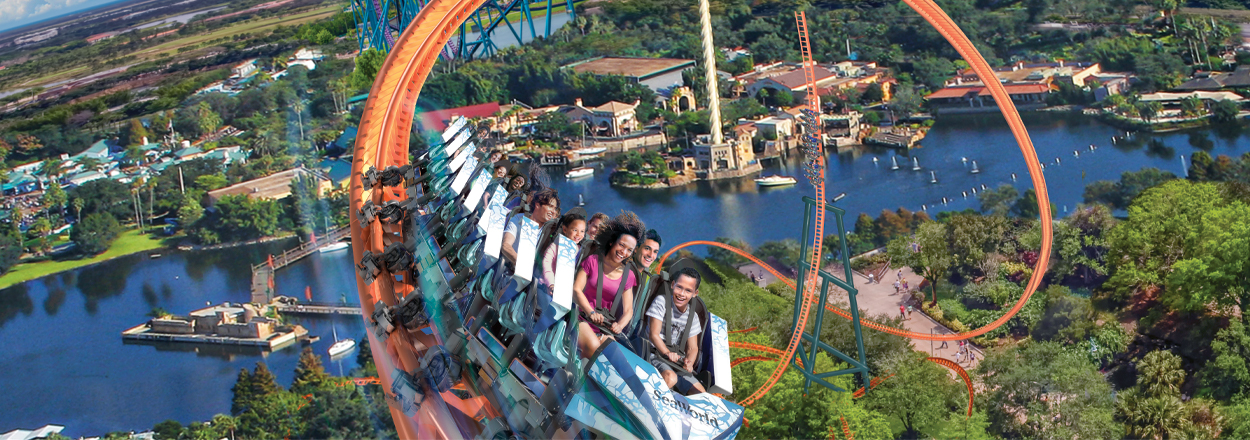As the pandemic enveloped the world, Orlando, Florida-based SeaWorld Entertainment Inc. was forced to shutter its 12 parks (including Busch Gardens in Tampa, Florida, and SeaWorld, Aquatica and Discovery Cove in Orlando) and furlough many team members — an agonizing decision necessary to ward off financial challenges as the sands shifted underfoot.
The COVID-19 pandemic has thrown business operations around the globe into chaos. And just as theme parks deliver unique experiences, they have also faced unique challenges in relation to everything from staffing to basic maintenance.
In many ways, SeaWorld is emblematic of the theme park industry’s pandemic struggles. As parks shut down across the country, SeaWorld quickly furloughed thousands of employees, cut executive salaries and expanded access to credit — all to ensure the company would have enough cash on hand to continue necessary operations while waiting out mandated closures and capacity limitations. Some attractions that were intended to open in 2020 were delayed.
Like other operators, SeaWorld is now cautiously hopeful about a return to somewhat normal. “We expect great things in 2022 as we distance ourselves from the past, deliver new and exciting reasons to visit, and welcome back our international audience to Orlando,” says Tim Swan, vice president of sales for SeaWorld Parks & Entertainment.

Tim Swan, vice president
of sales for SeaWorld
Parks & Entertainment.
Photo courtesy of SeaWorld.
Keeping the animals safe
As much of the world seemingly ground to a halt, there was one aspect of SeaWorld’s business that unambiguously could not be put on hold: continuing to care for the organization’s wide range of animals. In addition to SeaWorld’s famous orcas, facilities include a dolphin nursery, manatee rehabilitation area, penguin habitat, ray aquarium, pelican preserve and underwater shark-viewing tunnels.
Upkeep involved veterinary and enclosure care and also keeping a massive supply of fresh fish moving through the parks. “This is the one department that probably changed the least during the pandemic. Our animal care teams and rescue operations didn’t miss a beat,” says Swan. He notes that caretakers operate 24/7, 365, and are accustomed to working through extraordinary conditions, like hurricanes.
SeaWorld also continued to provide support for other animals in need outside of its parks — under the guidance of governmental agencies including NOAA and the Florida Fish and Wildlife Conservation Commission. The organization has a long history of conservation and rescue, including dolphins, seals, turtles, bald eagles, manatees and other mammals. “We responded to rescue requests even in the first week after the parks closed,” says Swan. “These team members are everyday heroes and have now rescued and rehabilitated more than 39,000 animals in our company’s history — something we are very proud of.”
Maintaining clear communication
The company also made it a priority to maintain engagement with partners and loyal customers. Swan says the first focus was on clear communication, and providing any needed support. Next, SeaWorld’s marketing team kept fans informed through frequent email, website and social media updates. And they quickly acted to launch SeaWorld@Home, an online suite of education and entertainment resources to help drive engagement and alleviate the boredom many were experiencing after spending so much time at home. Options include crafting how-tos, videos of animal habitats, virtual rides, and even — for homeschoolers and their tired parents — themed Zoom backgrounds.
As the parks began to reopen, communications shifted. SeaWorld emphasized safety protocols, including social distancing, reduced capacity and app-based offerings. And it incorporated those protocols into its promotion of events, such as socially distanced seating for live concerts at SeaWorld’s Seven Seas Food Festival. “We wanted our customers to know we were ready for them to visit,” says Swan.
Some protocols have since been relaxed in accordance with CDC guidelines, though Swan predicts that some of the changes may become a standard part of the business going forward. One example that’s likely to stick around: the ability to order food through an app and then pick it up at a designated time and location.
The road to recovery
In addition to implementing measures that ensure the safety of guests, the company’s recovery plan has focused on two additional goals: adding new and exciting reasons to visit (even for guests who have already visited multiple times), and working with hotel partners to provide convenient, affordable vacation options. “The experiences guests have with us today are far different from those of just a few years ago,” says Swan. “That will continue as we look ahead.”
When the parks began to reopen last June, SeaWorld was able to bring most of its staff back. But it has also struggled with the labor shortages that have plagued the hospitality sector across the country. “Our entire industry is challenged with the issue of manpower,” says Swan. “We will continue to offer our team members competitive wages and outstanding benefits.”
SeaWorld also faces financial challenges resulting from reduced capacity requirements. Revenue and attendance in the final quarter of 2020 were roughly half what they had been a year earlier.
Swan acknowledges that the pandemic has forced SeaWorld to make some adjustments. Some projects were delayed, while others were prioritized. But planning for a brighter future certainly never stopped. In 2021, several parks were outfitted with new restaurants and bars, including the Arctic-themed Altitude Burgers (a complement to a coming-soon roller coaster named Ice Breaker) and the craft beer-focused Flamecraft Bar in Orlando. Meanwhile, Tampa welcomed Giraffe Bar, which has views over the park’s animal-filled Serengeti Plain.
Specialty events — including concerts, holiday celebrations and a craft beer festival — have also been a top priority. The organization recently introduced Howl-O-Scream at SeaWorld Orlando, a nighttime complement to the daytime SeaWorld Spooktacular, and similar to a fan favorite offering at Busch Gardens in Tampa. The adults-oriented event, which includes haunted houses, frightening shows and Halloween-themed cocktails, will also be added this year to SeaWorld San Diego. And SeaWorld Abu Dhabi, the first park outside of the United States, is slated to complete construction by the end of 2022.
Ready to return
As vaccination uptake has increased, a brighter picture has emerged: iIn the second quarter of 2021, attendance was down just 10% from the second quarter of 2019.
In the midst of a difficult — and lengthy stretch — one thing that hasn’t been a problem is convincing guests to return. According to Cardify, a data insights firm, amusement parks have seen a dramatic increase in attendance as cities across the U.S. have opened up. “It is pretty clear that guests are ready to have fun,” says Swan. “The vaccines have enabled many to venture out with confidence and we’re seeing many of them at our parks.”
Imaging released by the company demonstrated masked guests riding roller coasters and otherwise enjoying the parks’ amenities, something that might have once been hard to picture. One recent SeaWorld TV commercial asks, “Are you ready for real?” — a reference to its gradual and very welcome return to somewhat normal. But certain logistical realities persist; most crucially, the inability of some guests to travel to the U.S. from key international markets. But Swan says that domestic visitation has been strong.
At this particular moment in time, it’s easy for the company to be optimistic but hard to forecast a precise path forward. In terms of short- to medium-term expectations for SeaWorld, Swan expects that special events will drive visitation in the fall, and that even better things lie ahead in 2022. “There is clearly light at the end of the tunnel,” he says, “as we distance ourselves from the past, introduce new and exciting reasons for guests to visit, including new roller coasters – SeaWorld Orlando’s Ice Breaker and Busch Gardens Tampa Bay’s Iron Gwazi – and welcome back our international audience to Orlando.”
Originally appeared in the fall 2021 issue of The Compass Magazine.





comments